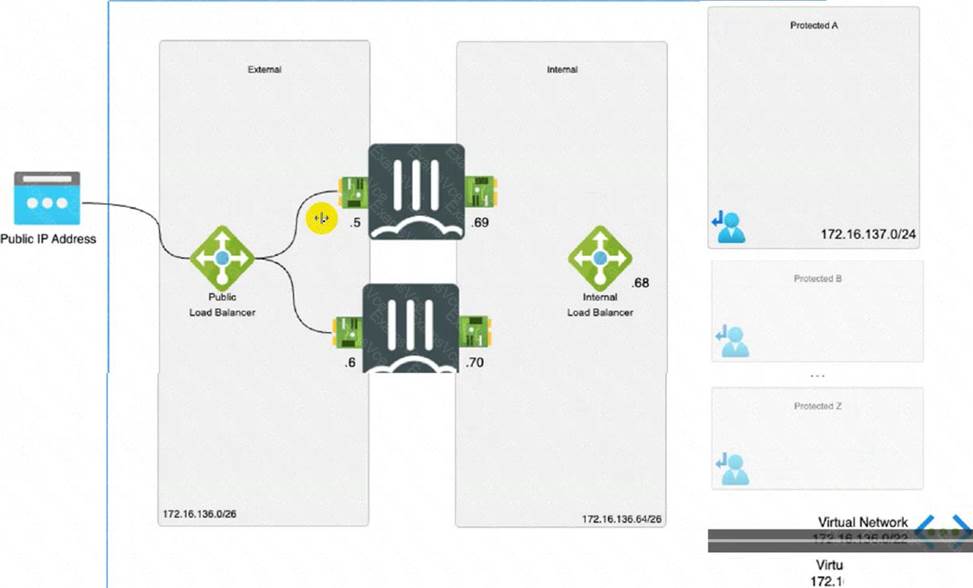- All Exams Instant Download
What are two important facts in the active-active load balance sandwich scenario?
Refer to the exhibit

Consider the active-active load balance sandwich scenario in Microsoft Azure.
What are two important facts in the active-active load balance sandwich scenario? (Choose two)
A . It uses the vdom-exception command to exclude the configuration from being synced
B . It is recommended to enable NAT on FortiGate policies.
C . It uses the FGCP protocol
D . It supports session synchronization for handling asynchronous traffic.
Answer: B D
Explanation
B. It is recommended to enable NAT on FortiGate policies. This is because the Azure load balancer uses a hash-based algorithm to distribute traffic to the FortiGate instances, and it relies on the source and destination IP addresses and ports of the packets1. If NAT is not enabled, the source IP address of the packets will be the same as the load balancer’s frontend IP address, which will result in uneven distribution of traffic and possible asymmetric routing issues1. Therefore, it is recommended to enable NAT on the FortiGate policies to preserve the original source IP address of the packets and ensure optimal load balancing and routing1.
D. It supports session synchronization for handling asynchronous traffic. This means that the FortiGate instances can synchronize their session tables with each other, so that they can handle traffic that does not follow the same path as the initial packet of a session2. For example, if a TCP SYN packet is sent to FortiGate A, but the TCP SYN-ACK packet is sent to FortiGate B, FortiGate B can forward the packet to FortiGate A by looking up the session table2. This feature allows the FortiGate instances to handle asymmetric traffic that may occur due to the Azure load balancer’s hash-based algorithm or other factors.
The other options are incorrect because:
– It does not use the vdom-exception command to exclude the configuration from being synced. The vdom-exception command is used to exclude certain configuration settings from being synchronized between FortiGate devices in a cluster or a high availability group3. However, in this scenario, the FortiGate devices are not in a cluster or a high availability group, but they are standalone devices with standalone configuration synchronization enabled. This feature allows them to synchronize most of their configuration settings with each other, except for some settings that identify the FortiGate to the network, such as the hostname.
– It does not use the FGCP protocol. FGCP stands for FortiGate Clustering Protocol, which is used to synchronize configuration and state information between FortiGate devices in a cluster or a high availability group. However, in this scenario, the FortiGate devices are not in a cluster or a high availability group, and they use standalone configuration synchronization instead of FGCP.
Latest NSE7_PBC-7.2 Dumps Valid Version with 37 Q&As
Latest And Valid Q&A | Instant Download | Once Fail, Full Refund
Subscribe
Login
0 Comments
Inline Feedbacks
View all comments

